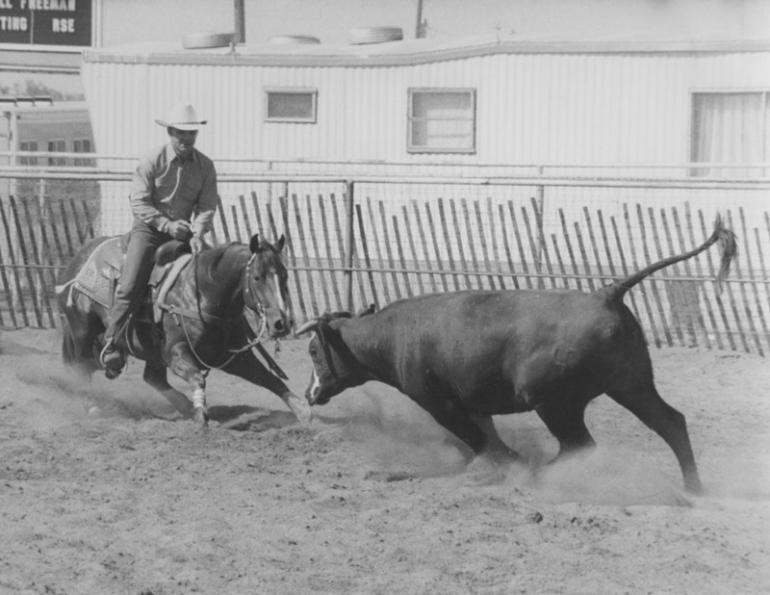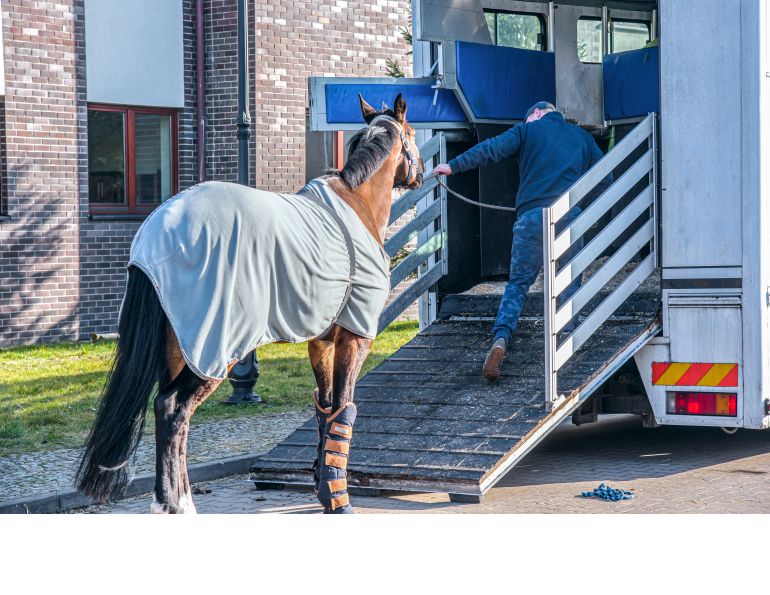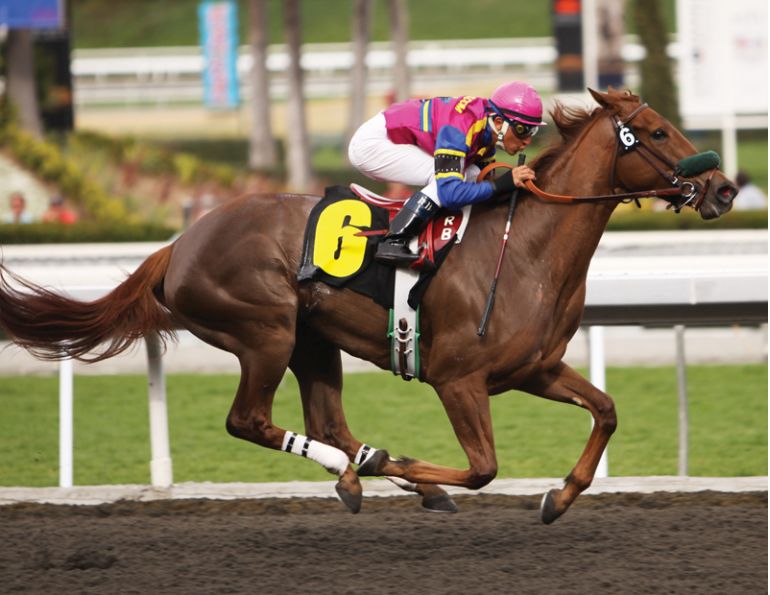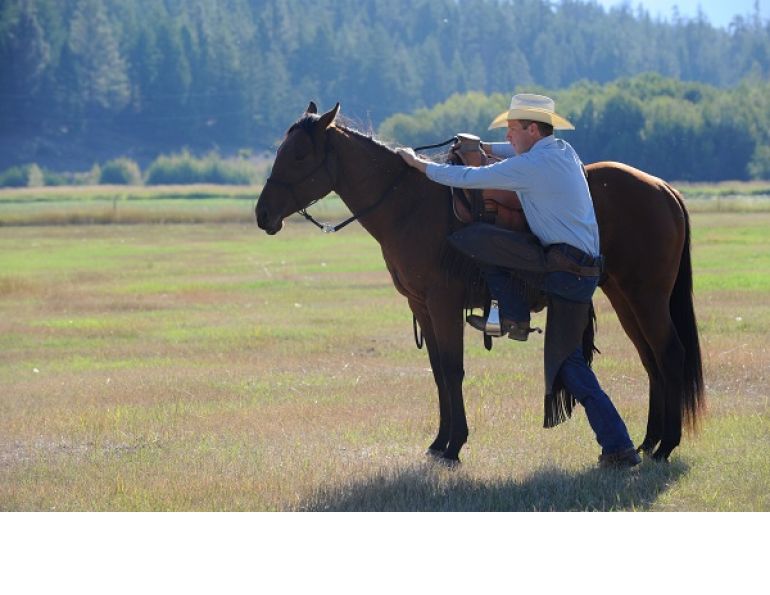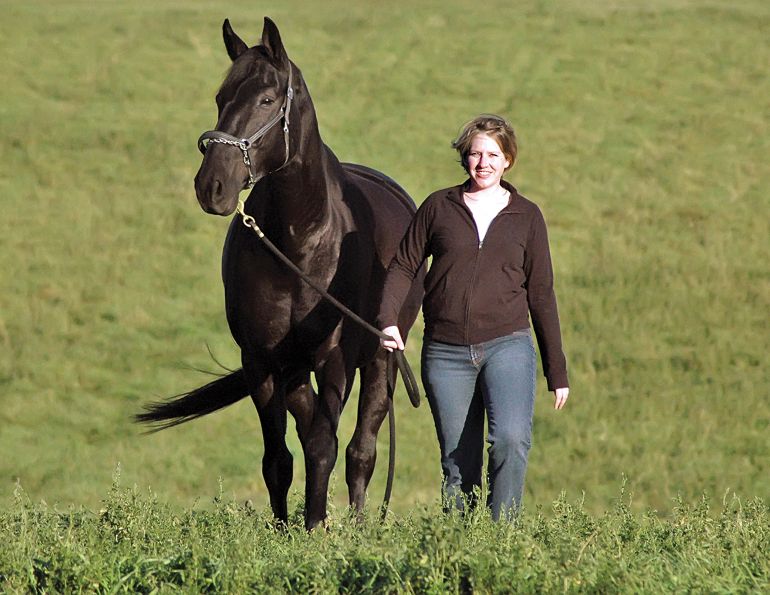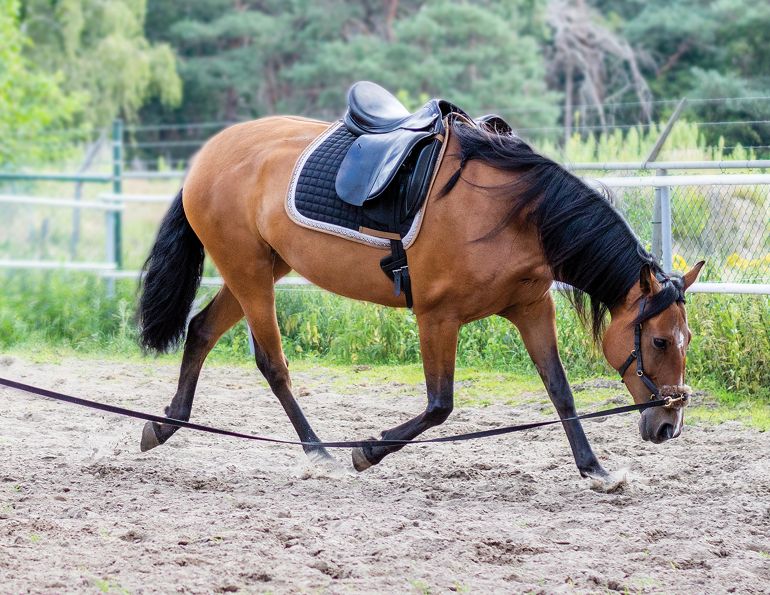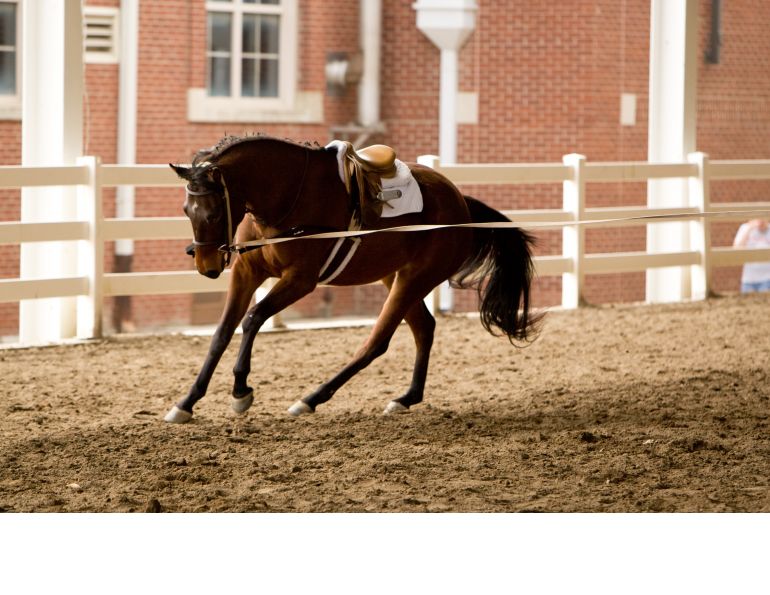By Anne Gage
Your horse won't stand still in the cross ties or when tied to the trailer at the horse show. He moves from side to side, back and forth, and paws frantically, damaging his hooves, shoes, and the stable floor. Instead of being able to enjoy some quiet bonding time with him, you rush through the grooming and saddling routine. The following eight tips will help you resolve this common horse training problem. You can help your horse to be relaxed, quiet, and enjoy his time while he is tied.
1. Focus on relieving the underlying cause rather than the behaviour itself. As flight animals, horses are stressed when their ability to flee is compromised. The behaviour your horse is exhibiting on the cross ties is simply an expression of the anxiety he is feeling. In order to change the behaviour, you need to address his anxiety and help him feel comfortable about being tied.
2. Commit to taking the time and doing the work to help your horse. Training takes time and consistency. You cannot achieve behavioural change by rushing or being impatient. Set up time specifically to work with your horse on this issue.
3. Change his frame of body to change his frame of mind. Horses who are busy when tied have an unbalanced frame - scissored legs, high head, inverted back, etc. This frame keeps adrenaline pumping into the blood stream, keeping his stress and anxiety level and, therefore his need to move, high. Your horse needs you to show him that he can stand straight, square, and level.
4. Help him find balance. Your horse simply will not be able to stand still until he finds balance. Balance comes from straightness, being square, and having a level neck. Your job then is to keep correcting his position until he finds that balance and keeps it on his own.
5. Straightness comes first. Straightness means that the horse's spine is in alignment from nose to tail. He will find and feel this straightness when the left hind lines up directly behind the left fore and the right hind lines up directly behind the right fore. Ask your horse to stand straight by pushing the appropriate hip or shoulder into alignment. As soon as your horse moves away from your push, stop pushing. You will have to move from side to side while keeping contact with the halter or head. As you move around his head, bend your near hip away from his head.
6. Be four square. When a horse's feet are scissored, he is mentally prepared for flight. When the feet are four square, it is like he is standing in box, balanced and parked. Being square means that the front feet are straight to each other and the hind feet are straight to each other. As you work on correcting your horse's straightness, you may find that he starts to find square on his own. If not, you can encourage him to stand squarely by asking him to take a step backwards or forwards. For backward movement, push on the front of the shoulder of the leg you want him to move. To encourage him to step forwards, tap his flank gently. You may have to ask for back and forth several times before your horse finds square.
7. Be level headed. A relaxed horse stands with his neck level so that the poll is the same height as withers. You can encourage your horse to bring his head down and his neck to level by gently moving his head laterally (side to side) with slight downward pressure. This is called "flexing." Make sure you are not being forceful by pulling or pushing on the head. Think of this more like a rhythmic massage loosening his poll. You can do this with your hands on the halter as you stand in front of your horse (one hand on either side of the halter at the point where the cheek piece connects with the nose band) or by cupping the bridge of his nose in one hand as you stand to the side of him. If your horse tries to raise his head or turn it left or right, use your hand or hands in the same place to block his effort. Remember that you are not forcing your horse into this posture, but are encouraging him to stay there long enough to realize how good it feels.
8. Avoid being at the end of your rope. Whether you are using cross ties or a single tie, ensure the tie is long enough to allow horse to comfortably lower his head and bring his neck to level without creating tightness on the tie. With a single tie, make sure he has enough room to avoid having his face jammed into the wall or side of the trailer. With cross ties, encourage your horse to stand so that the cheek pieces of the halter are lined up with the posts the cross ties are attached to. Always attach the cross ties to the lowest ring on the cheek piece as this allows more freedom to bring the head down.
This training process will take some time, but is well worth the effort. Both you and your horse will benefit as you will be able to enjoy the grooming and saddling time together and have quiet time to rest and relax between classes at the horse shows.
About the Author: Anne Gage is a Gold Level trainer certified in the Chris Irwin method of horsemanship. She teaches adult riders to confidently work with their horses, improve their riding skills, and bring the joy back into their riding experience. Her training and coaching methods are based on building mutual trust and respect between horse and human. Anne coaches and trains clients out of High Point Farm near Orangeville, Ontario, in Canada, and also travels to other locations giving one and two day clinics, workshops, and private sessions. For more information, visit her website at www.annegage.com.
Article source: www.EzineArticles.com
Main article photo: Alejandro Linares Garcia/Wikimedia Commons




